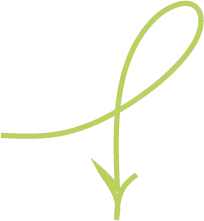A properly maintained irrigation system is essential for maintaining your landscape's health and beauty while conserving water. Understanding the key components and basic maintenance requirements of your sprinkler system will help ensure years of reliable performance.
Essential System Controls
- Manual Water Shut-offs
Know your system's shut-off locations: the main indoor valve (typically near the water meter) and outdoor valves on the backflow preventer. When valve handles are parallel to pipes, water flows; perpendicular means off. - Controller Operation
Your system's controller manages watering schedules and features important functions like rain sensor bypass and system-off settings. Keep it plugged in to maintain lightning protection. - Rain Sensor Function
The wireless rain sensor automatically prevents watering after rainfall, adjusting delay times based on weather conditions to optimize water usage.
Understanding Key Components
- Backflow Preventer
This brass device with a black cap prevents outdoor water from entering your home's water supply. Occasional water discharge during startup is normal. - Sprinkler Heads
Your system may include both rotors for large areas and spray heads for smaller zones. Both types are mounted on flexible swing pipes for protection. Regular cleaning prevents mineral buildup. - Drip Irrigation
For planted beds, drip systems provide efficient watering. Look for pop-up indicator flags to confirm proper operation.
Essential Maintenance Schedule
- Spring Startup
Professional activation after March 15th includes system testing, programming adjustments, and component inspection. - Summer Checkup
Mid-season inspection ensures optimal performance and adjusts programming for peak water demands. - Winter Preparation
Professional winterization prevents freeze damage through complete system drainage and proper valve closure.
Homeowner Monitoring Tips
- Regular Testing
Use your controller's test cycle feature every 2-4 weeks to verify proper operation of all zones. - Visual Inspection
Watch for signs of uneven watering, blocked sprinkler heads, or unusual wet spots that might indicate leaks. - System Monitoring
Pay special attention during the first few weeks after installation as settling soil can affect sprinkler head performance.
Common Irrigation Questions
Understanding and addressing common irrigation issues helps maintain your landscape's health while conserving water. While your irrigation system is designed for reliable operation, occasional adjustments or troubleshooting may be needed to ensure optimal performance.
Our team has compiled answers to the most frequently asked questions about irrigation system operation and maintenance. These solutions address common concerns and provide step-by-step guidance for basic troubleshooting. Remember that while many issues can be resolved with simple adjustments, some situations may require professional attention to prevent damage to your system or landscape.
- System Not Running
Check these common issues: • Verify water valve in basement is parallel to piping • Confirm backflow device handles are perpendicular • Check controller power and GFI reset • Ensure dial is in run position • Check rain sensor status (red LED) • Verify programmed start times and water days - Incorrect Watering Times
Verify these settings: • Clock shows correct time (AM/PM) • Start times are properly set • Programs don't overlap • Only one start time per program - Running During Rain
Rain sensors require ¼" of water to activate. Check that the sensor hasn't been accidentally bypassed using the SENSOR button. - Multiple Daily Cycles
This may be due to: • Multiple start times programmed • Auto Adjust mode settings • Run/Soak features active • Soil type and slope settings - Inactive Zones
Troubleshoot by: • Confirming zone run times • Performing daylight testing • Checking for drip zones • Looking for pressure issues - Non-functioning Heads
Common causes include: • Zone timing issues • Clogged nozzles • Underground leaks • Improper head elevation - Construction Considerations
Before any digging or lawn work: • Request system marking • Consider temporary shutdown • Plan for landscape changes • Protect heads and valves
Important Note: While these troubleshooting steps often resolve common issues, some problems may require professional attention. If you continue experiencing difficulties on an irrigation / sprinkler system that we have installed on your property, please contact our irrigation technicians at (201) 447-6205 for expert assistance.
Professional Irrigation Support
While these troubleshooting guidelines often resolve common issues, proper irrigation system maintenance requires regular professional attention. Our certified irrigation technicians provide comprehensive maintenance services to ensure your system operates efficiently throughout the growing season.
As your trusted landscape partner, we're committed to protecting your irrigation investment and maintaining your landscape's beauty. Our team serves distinguished properties throughout Ridgewood, Wyckoff, Saddle River, Franklin Lakes, and surrounding Bergen County communities with expert irrigation management services.
Have questions about your irrigation system? Contact our team at (201) 447-6205 or reach out through our contact form. We're here to help ensure your irrigation system provides reliable, efficient operation year after year.

